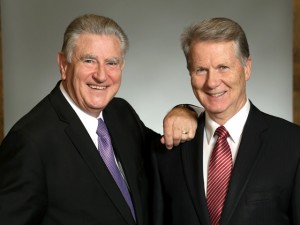Zurich’s Andy Marshall, who sits on the selection panel for the AFA Adviser of the Year Award, documents in this article the advice and process characteristics common to many or most of the 13 recipients of this Award, including its 2015 winner, David Reed.
The AFA Adviser of the Year (AoTY) and Practice of the Year (PoTY) awards are, and have always been, about recognising the best of the best – those advisers who are at the top of their game, promoting excellence in advice quality and innovation and professionalism in their client engagement processes.
Now in its thirteenth year, the secrets of success for previous AoTY finalists have been well documented and their business philosophies lauded. What advisers haven’t previously seen, however, is a comprehensive look at the processes behind the leading advisers that can provide a benchmark toward which aspiring future entrants can strive.
Australia’s best advisers are finding new ways to partner with their clients
So, what are the winning ingredients? According to research from Dr Rebecca Sheils of the Beddoes Institute, Australia’s best advisers are finding new ways to partner with their clients and create more sustainable relationships. Leading advisers are mapping client needs for every single step of the advice journey1.
Furthermore, Zurich’s joint whitepaper with the AFA ‘The Trusted Adviser’, undertaken by the Beddoes Institute, reveals the key business metrics of a “trusted adviser” today include:
- High client advocacy
- Better prospect conversion
- Higher profitability
The whitepaper also highlights the most important qualities that clients look for in an adviser are:
- Their ability to demonstrate empathy
- Their ability to be trusted and instil trust in the client easily and quickly
- Their clearly defined value that clients can appreciate
These components make up around 80 per cent of what clients say they want from their adviser (with technical skills and years’ experience assumed as pre-requisites). These qualities don’t just automatically manifest because advisers show a basic amount of empathy, or because they appear to be a ‘nice person’. They happen absolutely by design. They are shown time and time again by leading advisers who have built processes around the best way to demonstrate empathy to a range of clients from different incomes, backgrounds and life stages, by attaching value to their processes, and by building trust.
In the marketing world, specific processes such as ‘generational profiling’ of communication preferences is carried out to help marketers understand the unique needs of different generations of clients to help craft more effective messages.
Should financial advisers be following suit? Are specific, tailored communication strategies the processes of the future? To answer that, one needs to look longer-term than the current LIF discussion and focus on the more relevant disruptors facing the industry. Two of the most important disruptors are the impending generational wealth transfer, and the rise of more technologically engaged clients.
The Impending Wealth Transfer
The National Centre for Social and Economic Modelling (NATSEM) estimates that the level of household wealth that will be available for transfer by bequests will be $70 billion by 20302. This is a significant amount of wealth and presents a golden opportunity for Australian financial advisers, given that:
- Only two per cent of adult children keep their inheritances with their parents’ financial adviser3; and
- With the death of their husbands, only 45 per cent of widows keep their assets with the same financial adviser.4
Technologically engaged clients
Current research shows that many traditional wealth management firms are still unprepared for the potential threat being posed by robo-advice. According to the report, Robo-Advisors 2.0: How Automated Investing is Infiltrating the Wealth Management Industry, the assets under management for all registered advisers are now around $5 trillion, with robo-advisers now holding approximately $14 billion of those assets.
Even here in Australia, recent news that NAB will provide computer-generated financial advice to consumers through its online banking platform, should be a kick in the pants for advisers to start taking steps to build processes that provide clients with the same ease of service that robo-advice provides but with an added layer of trust and engagement that will set your business apart.
What do these processes look like?
To succeed in retaining and capturing assets during the age of intergenerational wealth transfer and technological disruption, advisers need to leverage the best practice of leading Advisers of the Year and develop end-to-end strategies, rather than disconnected solutions. Particular focus should be on the following key areas:
- Estate planning
- Mortgage solutions
- Debt recycling strategies
- Property advocacy services
- Complete risk insurance offers that encompass small and medium enterprise business succession solutions, as well as tailored insurance policy that matches client needs
- Drawing younger advisers to advice practices, as there is a strong correlation between the ages of advisers and their clients
- Cash-flow management solutions and advice (i.e. using cash-flow software as centrepiece of the relationship to collaborate with clients on strategies)
- Establishing ‘go-to’ market strategies to ‘catch’ heirs now. To strengthen the relationships with heirs, advisers may consider multiple approaches in how they tailor their offering, including creating collective allocation models that enable management of self-directed assets alongside managed assets, bundling products around life stages, and expanding the product set to include cash management, debt management and insurance.
To make the most of these services, advisers also need to consider the most emotionally intelligent and engaging way to deliver the advice to clients. Popular techniques from leading advisers include:
- Mind maps
- Psychological profiling
- Engagement apps (e.g. Zurich’s Adviser Flipchart including Wealth Index)
- Visual whiteboards
- Lifestyle questionnaires
The best of the best always ensure that they intertwine their advice solutions in an illustration of how it is connected to what matters most to their clients (i.e. presenting the advice journey by explaining how it will fulfil or enhance their clients’ core values). How does an adviser do this?
- They have a believable value proposition or ‘why’ statement;
- They have built consistent, repeatable, sustainable capabilities around their advice proposition; and
- Their business has a service model for the entire advice offering, as well as its individual components.
For an adviser facing a new set of challenges in the years ahead it is important to remember that the basic pre-requisite will always be to have processes in place to help understand your clients, construct your pitch, develop your key capabilities and continue to deliver them consistently, reliable and sustainably.
This is the real secret to success for Advisers of the Year.

Andy Marshall was appointed to the position of Head of Sales Strategies and Research, Life Risk for Zurich in January 2014.
Contact or follow the author: Twitter
Important Information: The content of this publication are the opinions of the writer and is intended as general information only which does not take into account the personal investment objectives, financial situation or needs of any person. It is dated September 2015, is given in good faith and is derived from sources believed to be accurate as at this date, which may be subject to change. It should not be considered to be a comprehensive statement on any matter and should not be relied on as such. Neither Zurich Australia Limited ABN 92 000 010 195 AFSL 232510, nor Zurich Investment Management Limited ABN 56 063 278 400 AFSL 232511 of 5 Blue Street North Sydney NSW 2060, nor any of its related entities, employees or directors (Zurich) give any warranty of reliability or accuracy nor accept any responsibility arising in any way including by reason of negligence for errors and omissions. Zurich recommends investors seek advice from appropriately qualified financial advisers. Zurich and its related entities receive remuneration such as fees, charges and premiums for the financial products which they issue. Details of these payments can be found in the relevant fund Product Disclosure Statement. No part of this document may be reproduced without prior written permission from Zurich CLYH-010580-2015










